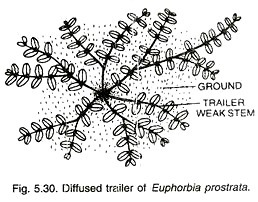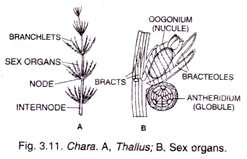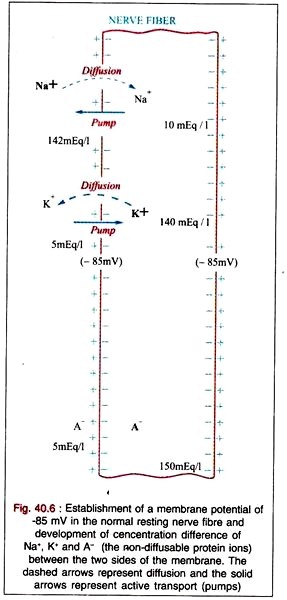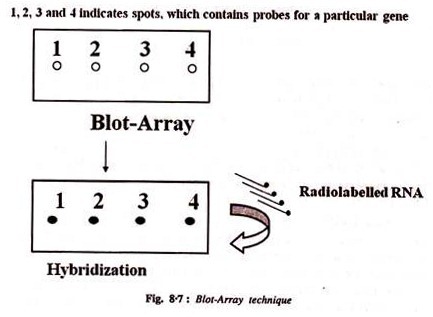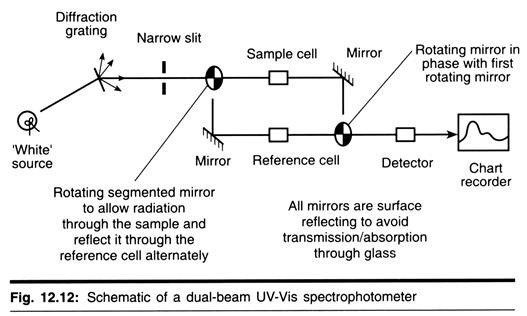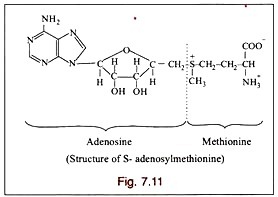Cell Synchronization Types: Microbial and Mammalian Cell Synchronization!
Cells remaining in same physiological phase giving balanced growth are called synchronous culture.
Then, synchrony, no matter how achieved, will last for many generations in unlimited growth medium under conditions met by at least certain prokaryotes.
Efforts to produce the desired synchronization of cell division have been made in both microbial as well as in mammalian cell cultures.
In both systems cells synchronization is carried out for various purposes. Also, in both systems synchronous cultures can be divided into two broad procedures. They are: physical method and chemical method. These are achieved by induction synchrony and selection synchrony. Induction synchrony makes use of inducing cells by some treatment to divide synchronously.
But selection synchrony uses a fraction of cells of a growing culture at a particular phase of the growth cycle. This fraction of cells is then grown separately as a continuous culture. Each of the methods can have several techniques. Cells which could be synchronized are E. coli, C. utilis, S. cerevisiae and CHO (mammalian).
A. Microbial Cell Synchronization:
1. Concepts:
The induction synchrony used in microbial system can be carried out by three techniques e.g., inhibitor block, starvation and growth and multiple changes of temperature or light. Likewise the selection synchrony may also be achieved by three techniques. These are gradient separation, membrane elution and filtration. Besides this growth limitation by cell surface has also been used.
The dependency of specific growth rate (µ) on substrate concentration (s) followed Monod’s law. Growth is first order at low and zero order at high concentration. One may consider µm to be independent of surface to volume (A/V = S) because at high substrate concentration the transport capability is high and un-limiting. However, the first order constant is dependent on S0.
This is because the rate of uptake of a cell suspended in a medium of low substrate concentration is proportional to the cell surface area. For augmentation of this concept Ks in Monod’s Law is replaced by KVS0. The validity of this substitution is demonstrated by considering cells growing at very low substrate concentration or under starvation where cell surface area determines the growth rate.
Thus, the method of synchronizing which has been used widely with microorganisms is to starve a culture. It allows the culture to run into a stationary phase and then to add fresh medium, the culture usually grows synchronously for one or more divisions. This starvations synchrony has been best utilized in developing synchronous budding yeasts. The purpose of such synchronization has been for regulation of cell proliferation, biochemical and/or biological events in such phases.
2. Theoretical aspects:
(i) Surface to Volume Ratio for Rods with Hemispherical Poles:
In order to fix ideas and to indicate computational method, it is necessary to consider simplest case for an organism whose shape is a right cylinder with hemispherical poles. The volume is given by,
In equation 6.21, q is the quantity transported, D is the diffusion constant, A is the surface area, and dc/dx is the concentration gradient. In equation 6.22, Y is the yield coefficient (corresponding to the cellular volume produced by a unit amount of the limiting nutrient), P is the permeability constant (which is the diffusion constant divided by the thickness of the membrane, i.e. D/dx) and s is the external substrate concentration (since the internal concentration is presumed to be maintained at zero). For uptake always limited by an active transport system, P would not have the meaning of a permeability constant, but would have the significance of
Where µmax/k’ has been substituted for YP. These two equations are the high and low substrate limits where diffusion through the medium is never limiting. The Monod relation of bacterial growth is a relationship analogous to the Michaelis-Menton enzyme law covering both extremes. In the present purpose it would be given by
The Blackman “Law of the Minimum” formulation of growth is probably more generally pertinent instead of the hyperbola. Equations (6.24) and (6.25) apply as well in the intermediary concentration and growth as synchrony is determined by
(iii) Importance of Cell Synchronization:
In starvation stress synchrony, the cells (S. cerevisiae) subjected to starvation induction degrade its existing proteins at considerable rate. This leads to the generation of an amino acid pool that is utilized to synthesize new proteins whose induction is unique to the maintenance of synchrony in starvation state.
This method of synchronizing has been used widely with microorganism culture. The principle is to run the culture into the stationary phase and then add fresh synthetic medium. The starvation synchrony as used for budding yeasts has been depicted in Fig. 6.5.
It shows in developing synchronized yeast growth the first cycle is very long, because of the long lag phase of about 75 minutes, which precedes the start of building. Using membrane elution technique its characteristics in comparison to other relevant types of culture can be realized from the summarized form given in Fig. 6.6. Interesting implications of phased or synchronous culture may concern growth rate, cell composition, variability in the cell cycle of growing and non-growing cells.
In developing starvation synchrony in bacterial cultures like E. coli it has been observed that at the onset of starvation it undergoes a temporarily ordered program of starvation gene expression involving 40-80 genes which some four hours later yields cells possessing an enhanced general resistance.
Two classes of genes are induced upon carbon starvation stress, the cst genes requiring cyclic AMP and pex genes not requiring this nucleotide for induction. On careful analysis of carbon starved synchronous culture of E. coli by 2D gel autoradiographs, it was revealed that up to 50 proteins are induced upon carbon starvation.
As depicted in Fig. 6.6 in membrane elution technique, a random growing culture (E. coli) is collected on a membrane filter. The filter is then inverted allowing fresh medium to run through and thus excess cells are washed off. The new born cells which are released from the filter surface are suitable for growing as a synchronous culture.
The distribution of cell ages in a random culture appears as given in Fig. 6.7(a) and the relative concentration level of cells in the elute after loading and eluting shows the profile as in Fig. 6.7(b). If one follows the rate of synthesis of macromolcules and the elution pattern of radioactivity per cell from the membrane culture, which was radio pulse-labeled with a radioactive precursor of the macromolecules, the profile that appears to be as in Fig. 6.8 a and b.
A fairly clear picture of the synthetic pattern of DNA in different media can be observed in this synchronization mode. Phased culture in comparison to other strategies is performed at steady repeated condition state as shown in Fig. 6.9. From this figure it can be observed that in batch and continuous cultures the individual cells are at different points of development in their replication cycles. However, in phased culture cells grow approximately in unison during the cell cycle. This enables cell size amplification.
B. Mammalian Cell Synchronization
1. Purposes and methods:
Like in microbial cells the methods of synchronizing mammalian cells in culture serve various purposes.
The important purposes of mammalian cell synchronization relate to the regulation of the following:
1. Cell proliferation, biochemical and/or biological events in each phase.
2. Cell metabolism and other cell cycle-dependent events (protein, MAb synthesis)
3. Cell attachment
In this system also method of synchronization can be divided into two broad classes.
1. Physical methods
i. mitotic attachment
ii. ficoll gradient centrifugation
2. Chemical methods
i. double thymidine block (DTB)
ii. isoleucine deprivation (ID)
iii. serum deprivation (SD) and hydroxy urea (HU)
By double thymidine block synchronous DNA synthesis in mammalian cells (CHO) could be achieved. However, the degree of synchrony has been observed to be cell line dependent (Fig. 6.10 a and b)
In isoleucine deprivation cells (CHO) are incubated in F10 medium without isoleucine and glutamine plus 15% serum for 48 hrs, then isoleucine and glutamine are added to the normal concentration. The degree of synchrony is fair (Fig. 6.11).
In SD and HU method cells are incubated with low serum (1% or 0.5%) medium for 48 hrs, then serum-deficient medium is replaced by medium containing 10% serum, six hrs later HU is added to a final concentration of 1.5 mM and incubated for another 14 hrs. After that cells are re-suspended in fresh medium. The degree of synchrony has been stated to be excellent for obtaining cells synchronized at Gx/S boundary (Fig. 6.12).
2. Comparison of the methods:
Examination of figures 6.10 through 6.12 may reveal an inter-comparison of the methods as given in table 6.3.
The cells synchronized by above methods are characterized in terms of the following:
1. DNA synthesis (incorporating [3H] thymidine into DNA.
2. Cell density and
3. Cell division (percent of double cells in population).


